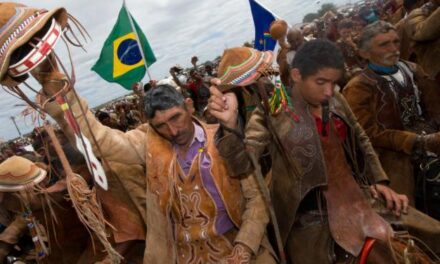By Laís Oliveira | Translation: Isabela Jordão
 December 31 in Brazil is synonymous with wearing white as a tradition for the New Year, but do you know why? It all started, officially, in the mid-1950s, but in fact this habit has been around for much longer in some countries of Africa.
December 31 in Brazil is synonymous with wearing white as a tradition for the New Year, but do you know why? It all started, officially, in the mid-1950s, but in fact this habit has been around for much longer in some countries of Africa.
The symbolism of wearing white on New Year’s Eve came from an African religion, Candomblé, whose followers always wore white clothes to deliver offerings before midnight to the queen of the sea, Iemanjá — an African deity originally from Nigeria.
In Brazil, this tradition began in the 1950s, on the beaches of Salvador, a city with a strong influence of African culture, and in São Paulo, when a group called “Primado de Umbanda” (Umbanda is an African-Brazilian religion) went to Praia Grande, on the coast, to do Iemanjá Day’s Meeting of Waters, a kind of procession.
The tradition of jumping seven waves at the turn of the year, making seven different requests, is also linked to Umbanda and the cult of Iemanjá. Seven is a Kabbalistic number, which in Umbanda represents Exu, son of Iemanjá. It is also related to the Seven Lines of Umbanda, a concept of organization of spirits under the command of an orixá – you can also read here what are the orixás. Each jump, in this case, would be a request to a different orixá.
This unique and standardized color ritual attracted attention and became famous at the time, taking on a giant proportion over the years. Many people wanted to participate in that curious event in which a crowd was celebrating the arrival of the new year of white.
The color, then, became a real Brazilian new year costume in the 1970s — when the ritual was exported to Rio de Janeiro, where Copacabana beach was already the meeting point of New Year’s Eve. There are no historical records as to why the date of the offerings to Iemanjá was moved to December 31 — since in Nigeria, the ritual is performed on February 2 (as well as in Bahia, which, in turn, does mostly in the last days of the year), but the habit was adopted by the population, regardless of religion.
In other countries, like the United States, the use of white is not so frequent. In some of them, groups that believe that color represents peace and harmony, receive the new year dressed in white, but still this number is not as large as in Brazil.














